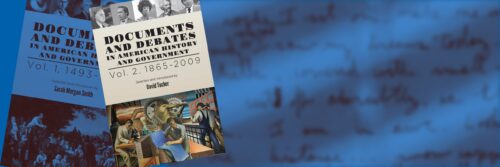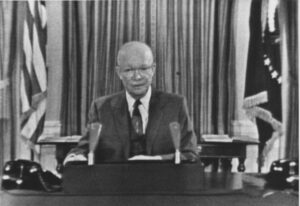
Documents and Debates: Reconstructing the South
South Carolina became the first state to secede from the Union when a convention in Charleston approved an Ordinance of Secession in December of 1860. Few Americans, during that tumultuous secession winter, foresaw a lengthy civil war. Few Americans predicted the war would bring horrific casualty rates, the devastation of the South, or the emancipation of four million African-American enslaved persons. As bitter as the armed struggle was, the political battle to reunite the Union was only beginning when the war staggered to a close in the spring of 1865. In hindsight, the political debate confronting the nation at the war’s conclusion seems equaled only by the logistical challenge of winning it.
Two main problems faced the nation at the end of the Civil War: how to rebuild the political connections between North and South, and how to protect the rights of the freedmen. Answering the first question depended on how one understood the South’s status. Had the seceding southern states left the Union? Should they be treated as a conquered nation, or had they remained in the Union with the constitutional right to reclaim their place in it? To ask the question another way: were the defeated confederates traitors to the nation? What proofs of loyalty did they need to offer before regaining their rights as citizens?
The second problem was closely related to the first. What assistance should the federal government render the freedmen and women justly demanding the full rights of citizenship, including suffrage? Would the former Confederates respect the rights of those formerly enslaved?
We recently introduced a newly organized resource on the Teaching American History website, designed to engage students in the debates of earlier generations. Teaching American History developed its two-volume Documents and Debates collection to help teachers present the issues at stake in some of the most crucial moments in American history. Each chapter in the collection presents a variety of viewpoints on one political or social question, along with an introduction giving context, study questions, and helpful notes. We are now adding a new tool: audio recordings of each chapter’s primary sources.
Two weeks ago we highlighted Chapter One: Early Contact from Documents and Debates, Volume 1: 1493 – 1865. Today we are highlighting the first chapter of Volume 2: Reconstructing the South. Below is a list of documents in this chapter.
- President Abraham Lincoln to Nathaniel Banks, August 5, 1863
- President Abraham Lincoln, Second Inaugural Address, March 4, 1865
- Representative Thaddeus Stevens, “Reconstruction,” September 6, 1865
- Frederick Douglass, “Reconstruction,” December 1866
- Jubilee Singers, “Many Thousand Gone,” 1872
- Senator Benjamin R. Tillman, Speech in the Senate, March 23, 1900
These documents in Reconstructing the South present the stark challenge of Reconstruction. Abraham Lincoln’s letter to Nathaniel Banks and his Second Inaugural Address convey the generous restoration of the Union he envisioned. Captured most poignantly in the Second Inaugural’s famous line “With malice toward none: with charity for all,” Lincoln’s plan was more lenient than that of his fellow Republican, Thaddeus Stevens. Stevens believed creating a “true republic” in the South required that “The whole fabric of Southern Society … be changed.” Stevens called for punishing rebel leaders, confederate soldiers, and large plantation owners.
An even sharper contrast separates the speeches of Frederick Douglass and Benjamin Tillman. Douglass calls for “negro suffrage” as the freedman’s best defense against white southerners’ deeply ingrained attitudes about “manners, morals, and religion…” – creating “conditions, not out of which slavery will again grow, but under which it is impossible for the Federal government to wholly destroy it.” After the collapse of Reconstruction closed the small window of equality opened during the era, men like Benjamin Tillman unapologetically insisted on white supremacy. “We took the government away in 1876,” declared Tillman. “We of the South have never recognized the right of the negro to govern the white men, and we never will. We have never believed him to be equal to the white man, and we will not submit to his gratifying lust on our wives and daughters without lynching him.”
For Lincoln, Stevens, and Douglass, Reconstruction promised a chance to rebuild the nation with citizens of all races having “learned to venerate the Declaration of Independence.” Yet perhaps all three, to differing extents, underestimated the difficulty re-educating the South in this way. Careful readers of the primary sources in Reconstructing the South may wonder if the promise of Reconstruction ever stood a chance of succeeding.
Access Reconstructing the South Here



